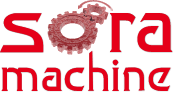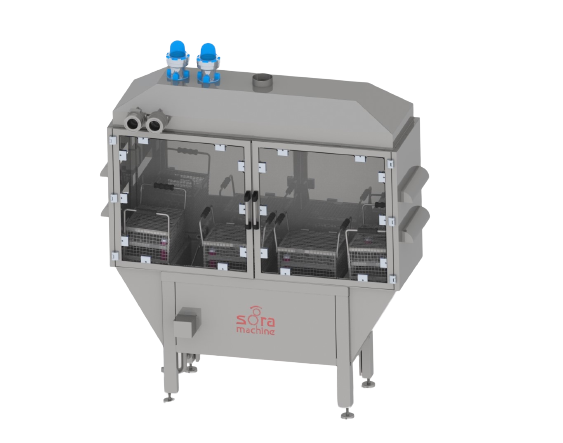What Is a Manual Water Bath and Why Is It Used in Aerosol Safety Testing?
A manual water bath is a safety device used in aerosol production lines to test containers for leaks by submerging them in heated water. When aerosol cans are pressurized, even a micro-leak can compromise safety. The manual water bath method ensures that faulty or leaking containers are identified before they proceed to packaging or distribution.
The test involves immersing filled cans in a water tank, typically heated to a specific temperature. If bubbles are observed escaping from the container, it indicates a leak. This visual method, although simple, is highly effective and widely accepted in global safety standards.
How Does the Manual Water Bath Leak Test Work?
The manual leak test by water bath follows a straightforward yet essential process:
-
Cans are filled and sealed: After the filling and crimping stages, pressurized cans are transferred to the water bath.
-
Submersion in heated water: The water is maintained at a controlled temperature, usually between 50°C to 55°C, to simulate stress conditions.
-
Visual inspection: Operators watch for rising air or gas bubbles, which indicate leakage from the canister or valve.
-
Manual removal of defective units: Any leaking containers are removed from the line for disposal or rework.
This method is not only cost-effective but also reliable for small to medium-scale aerosol production environments.
Why Is Leak Testing Crucial in Aerosol Filling Lines?
Leak testing is a mandatory part of aerosol production due to the pressurized and often flammable nature of the contents. Even a tiny leak can result in:
-
Product loss and compromised fill accuracy
-
Safety hazards including fire or explosion risks during transport
-
Customer dissatisfaction and damage to brand reputation
-
Non-compliance with regulatory and transport standards such as ADR or DOT
Implementing a manual water bath test ensures that every can leaving the production line is safe, intact, and compliant with industry standards.
What Are the Advantages of Manual Water Bath Systems?
Manual water bath leak testing devices offer several benefits, especially for facilities operating with limited automation or custom product lines:
-
Cost-effective setup with no need for complex automation
-
Quick operator training and ease of use
-
Flexible design suitable for various aerosol can sizes
-
Reliable results when conducted by trained personnel
-
Compact footprint ideal for small production spaces
Although manual, these systems can be built from high-grade materials and integrated into semi-automated lines depending on operational needs.
What Safety Standards Do Manual Water Baths Comply With?
Sora Machine’s manual water bath safety devices are designed in accordance with globally recognized safety and manufacturing standards:
-
EN 15004 – for fire suppression systems using pressurized containers
-
ADR / DOT – transport compliance for dangerous goods
-
ISO aerosol filling standards – ensuring production traceability
-
CE marked components – to guarantee operational safety in the EU
Each unit is manufactured using corrosion-resistant stainless steel and temperature control systems that ensure repeatable, compliant testing performance.
What Are the Key Features of Sora Machine’s Manual Water Bath Systems?
Sora Machine designs and manufactures manual water bath safety devices with a focus on durability, safety, and user-friendly operation. Key features include:
-
Double-walled stainless steel tanks for thermal insulation
-
Adjustable temperature control for optimized leak detection
-
Ergonomic can holders to support quick loading and unloading
-
Drainage and overflow systems for safe water management
-
Optional air bubble sensors to assist visual inspection (for hybrid models)
Our systems are ideal for low-to-medium speed production environments that still demand high safety standards and full compliance.
When Should You Choose a Manual Water Bath Instead of an Automatic One?
While fully automatic water bath systems are ideal for high-speed production, there are scenarios where a manual water bath is more suitable:
-
Startups or small production runs
-
Specialty or limited-edition aerosol products
-
Pilot-scale manufacturing and R&D labs
-
Budget-conscious operations
-
Products requiring frequent line changes
Manual systems give manufacturers greater flexibility while maintaining essential safety testing processes.
How Does Sora Machine Ensure Operator Safety with Manual Water Bath Systems?
Although manual in operation, safety is never compromised. Sora Machine includes several features to protect operators:
-
Insulated tank surfaces to prevent heat exposure
-
Non-slip platforms and handles for safe handling
-
Emergency stop controls and overheat protection
-
Clear water level indicators to prevent overflows
-
Optional lid or cover options for increased safety
These systems are also designed to be easily cleaned and sanitized to support hygienic working conditions.
How Can Manual Water Baths Be Integrated Into an Existing Filling Line?
Sora Machine offers modular designs that allow the manual water bath system to be placed:
-
Directly after the filling/crimping stage
-
In a standalone QC (quality control) station
-
At batch testing points for periodic inspection
-
With optional conveyor feeds for semi-automation
Depending on the layout and speed of your filling line, Sora’s engineering team can recommend the most effective configuration.




